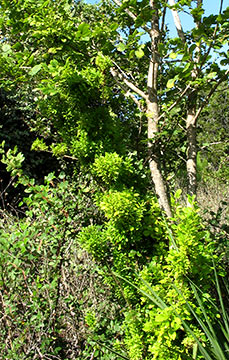
|
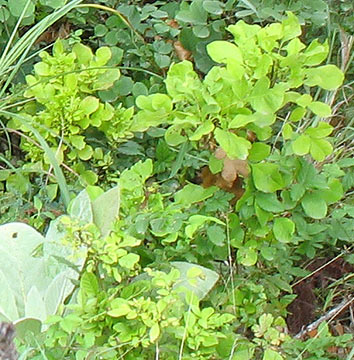
|
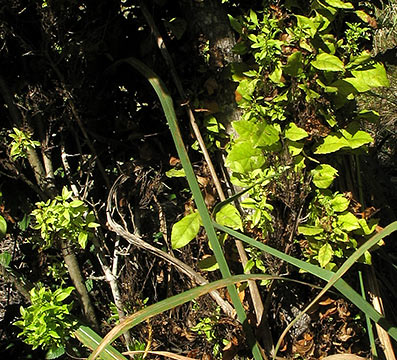
|
|---|---|---|
| August 2012 | July 2014 | August 2014 |

|

|

|
|---|---|---|
| August 2012 | July 2014 | August 2014 |

J. D. Pokorny & W. A. Sinclair, HOW to Identify and Manage Ash Yellows in Forest Stands and Home Landscapes (USDA Forest Service NA-FR-03-94) give the following description:
Ash yellows is caused by wall–less microbes called mycoplasmalike organisms (MLOs) which invade the tree systemically (phloem sieve tubes) and are presumed to be transmitted by leafhoppers or related insects. White ash (F. americana) and green ash (F. pennsylvanica) are the most frequently affected species.
The ash yellows was first noticed as malformed clumps of leaves in ca. 2009 with small trees along Deadman's Creek, which had dried up only during the exceptional droughts of 2006 & 2009. Seen below:
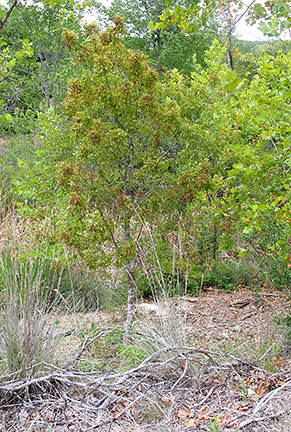
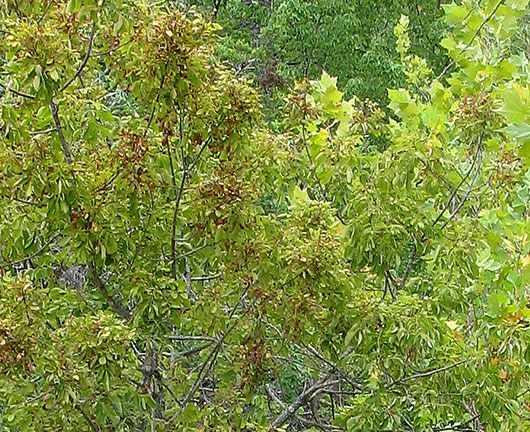
It seemed to have primarily affected the green ashes, but it then affected Texas ash as well, and soon large trees of both taxa along and near the creek died. Currently — August 2014 — I have found only one green ash still alive. The Texas ash is making a strong comeback along and near the creek, with a thicket of saplings emerging, most appearing healthy — but not all. In the following photo the yellows is apparent with the trees at the bottom right. [The creek is not flowing strong.]
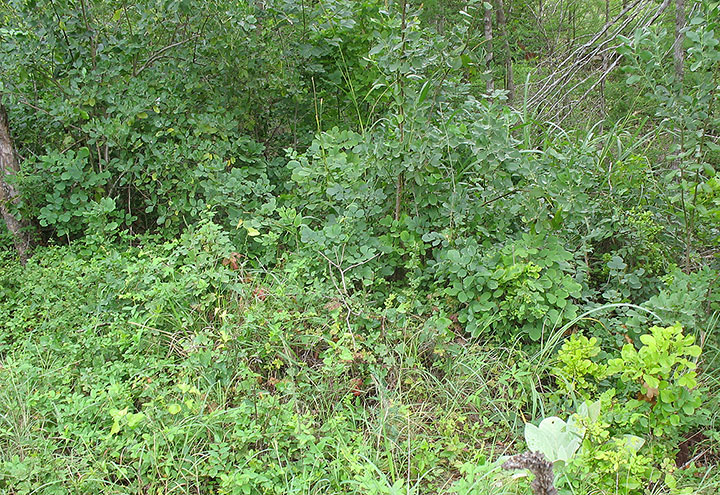
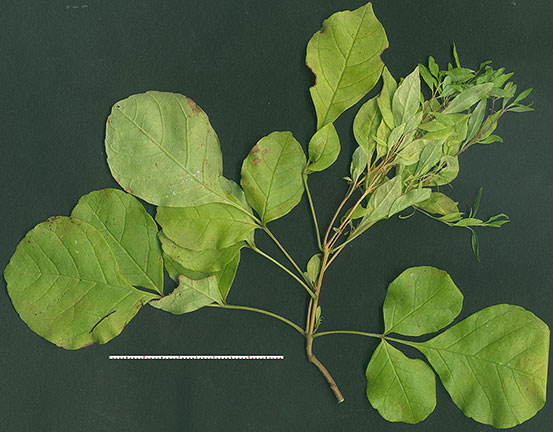
Small tree, Aug. 20, 2014 |
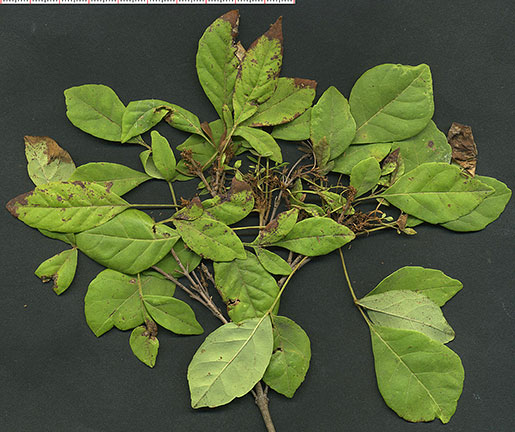
Large tree, Aug. 30, 2014 |
|---|---|
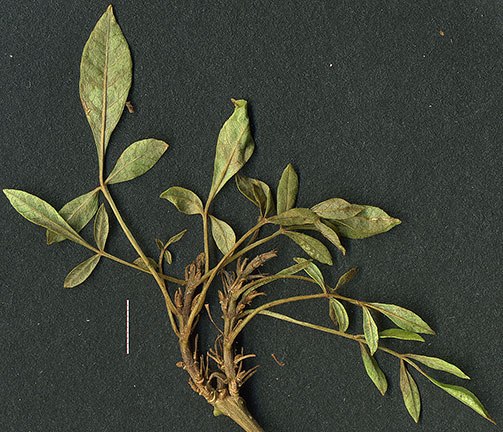
Leaves extracted from the leaves above right. |
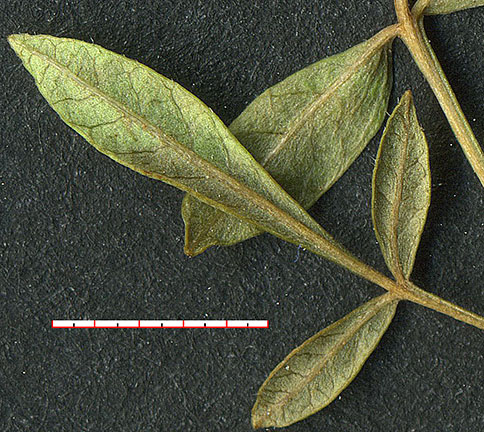
Leaves with winged rachises, extracted from the leaves to the left. |